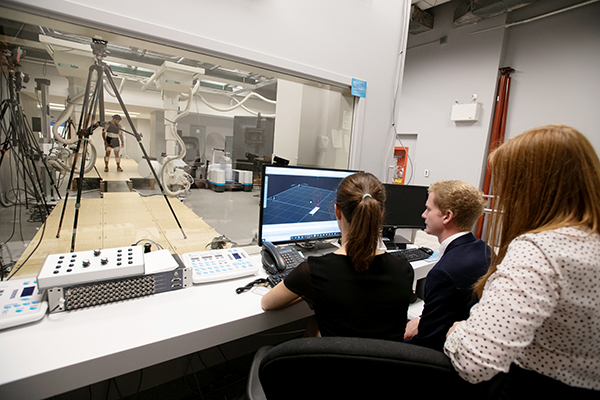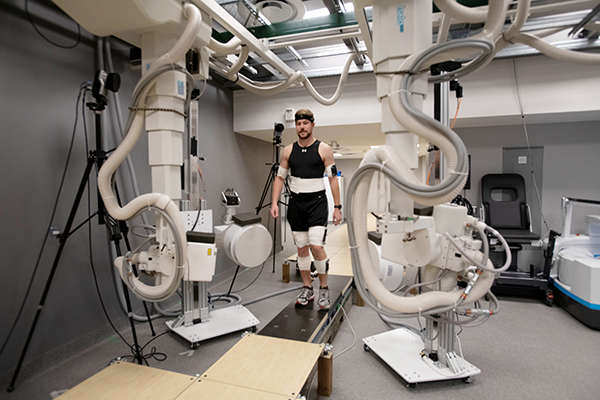Exploring bones and joints in action
October 24, 2019
Share

Researchers at Queen’s University and Kingston Health Sciences Centre (KHSC) are celebrating the completion of a $2.5 million facility that offers unique, X-ray vision insights into the biomechanics of nearly any joint in the human body.
While advances in orthopedic medicine have improved the mobility of humans worldwide, the precise workings of our skeleton and its joints are still notoriously difficult to understand, particularly when in motion.
The Skeletal Observation Laboratory (SOL), a facility supported by Queen’s and KHSC at the Hotel Dieu (HDH) site, is helping to fill that gap. One of only a few such labs in Canada, it offers leading-edge technologies for capturing, in exquisite detail, how the machinery of our bones and joints work when they’re in dynamic action.
During the opening event, Michael Rainbow, the lab’s lead investigator and assistant professor of Mechanical Engineering at Queen’s, and David Pichora, orthopedic surgeon and president & CEO of Kingston Health Sciences Centre, demonstrated the new, ultra low-dose, load-bearing CAT scanner. Unlike conventional CT machines, which require patients to lie down, with no load on their joints, this scanner can perform 3D scans while the person is standing.

The lab is helping doctors and scientists develop new treatments and preventative strategies tailored to individual bone and joint disorders.
Dr. Rainbow demonstrated how the lab’s powerful imaging equipment – such as high-speed X-ray, and high speed video capable of 1,000 frames per second – helps him explore the complex machinery of foot function during walking and running.
“Better understanding of this complicated network of bones and joints will lead to better designed footwear, prosthetics and orthotics for patients,” he says.
The Skeletal Observation Laboratory is a satellite facility of the Human Mobility Research Centre at KHSC’s Kingston General Hospital site. It is co-located at HDH with the Human Motion Research Lab and the Queen’s Centre for Neurosciences clinical lab, enabling patient-oriented “research from brain to joints.”
Funders of the Skeletal Observation Lab and its research include the Canada Foundation for Innovation (CFI), Canadian Institutes of Health Research (CIHR), Natural Sciences and Engineering Research Council (NSERC), Queen’s Faculty of Engineering and Applied Science and Department of Mechanical and Materials Engineering, The Estate of Donald McGeachy, BSc (Mech Eng) 1940 and University Hospitals Kingston Foundation (UHKF).